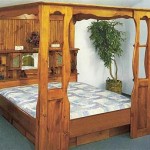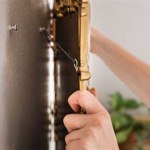Mirrored Wallpaper for Walls
Mirrored wallpaper offers a compelling way to transform interior spaces. It leverages the reflective properties of mirrors to create an illusion of depth and spaciousness, enhance natural light, and add a touch of glamour to a room. This article explores the types, applications, installation process, and maintenance of mirrored wallpaper, providing a comprehensive overview of this unique design element.
Mirrored wallpaper comes in various forms, each with its own characteristics and benefits. Traditional mirrored wallpaper consists of small, individual tiles of real glass mirror affixed to a backing paper. This type offers the truest reflection but can be more challenging to install and more fragile than other options. Acrylic mirror sheets, presented as wallpaper rolls, provide a lighter, more flexible, and shatter-resistant alternative. These sheets often feature a self-adhesive backing, simplifying the installation process. Finally, mirrored vinyl wallpaper presents a cost-effective and easy-to-install solution. Though it doesn't offer the same clarity of reflection as real glass or acrylic, it still provides a noticeable mirroring effect and comes in a wide range of patterns and tints.
The applications of mirrored wallpaper are diverse, spanning residential and commercial spaces. In smaller rooms or apartments, strategically placed mirrored wallpaper can create an illusion of greater depth and spaciousness. Applying it to a single wall can visually double the size of the room, making it appear more open and airy. In larger rooms, mirrored wallpaper can amplify natural light, enhancing brightness and reducing the need for artificial lighting. This can contribute to energy savings and create a more welcoming atmosphere. Mirrored wallpaper also serves as a stylish design element, adding a touch of sophistication and glamour to any space. It can be used as a feature wall, in alcoves, or on furniture to create a unique and eye-catching look.
Proper installation is crucial for achieving a seamless and professional finish with mirrored wallpaper. Before beginning, the wall surface must be thoroughly cleaned, dry, and smooth. Any imperfections or bumps can distort the reflection and compromise the overall appearance. For traditional tile mirrored wallpaper, adhesive is applied to the back of each tile before carefully placing it on the wall. Precise alignment is key to ensuring a smooth and continuous mirrored surface. Acrylic mirror sheets and mirrored vinyl wallpaper typically come with a self-adhesive backing, simplifying the installation process. The backing paper is gradually peeled away as the sheet is applied to the wall, smoothing out any air bubbles as you go. Using a squeegee can help achieve a bubble-free finish.
Maintaining the pristine appearance of mirrored wallpaper requires regular cleaning. Dust and fingerprints can easily detract from the reflective surface, diminishing its visual impact. Gentle cleaning with a soft, lint-free cloth and a mild glass cleaner is recommended. Avoid abrasive cleaners or scouring pads, as these can scratch the mirrored surface. For stubborn marks, a solution of warm water and vinegar can be effective. It's important to dry the mirrored surface thoroughly after cleaning to prevent water spots or streaks. Regular dusting with a microfiber cloth can help minimize the buildup of dust and grime.
Beyond traditional applications, mirrored wallpaper offers a versatile design medium for creative projects. It can be used to create unique furniture pieces, such as mirrored tabletops or cabinet doors. Smaller sections of mirrored wallpaper can be incorporated into artwork or decorative frames, adding a reflective element to existing décor. Mirrored wallpaper can also be used to create interesting patterns and textures on walls, adding a touch of artistry to interior spaces. By experimenting with different placements and combinations, mirrored wallpaper can be used to achieve a wide range of design effects.
When selecting mirrored wallpaper, several factors warrant consideration. The size and layout of the room play a significant role in determining the appropriate type and placement of the wallpaper. The desired level of reflectivity is another important factor. Real glass offers the truest reflection, while acrylic and vinyl offer varying degrees of reflectivity. The overall design aesthetic of the space should also be considered. Mirrored wallpaper comes in a variety of finishes, from classic silver to tinted and patterned options, allowing for integration with various design styles. Budget is also a key consideration, with prices varying depending on the material and finish of the wallpaper.
Mirrored wallpaper is a dynamic design element offering the ability to enhance space, light, and style in any room. By understanding the various types, applications, and installation methods, one can effectively utilize mirrored wallpaper to create stunning and transformative interiors. Careful consideration of the space, desired effect, and maintenance requirements will ensure a successful and impactful implementation of this unique design material.

Antique Mirrored Wallpaper Mad About The House

Sworth Park Mirrored Graphite Wallpaper Rebel Walls

Sworth Park Mirrored Graphite Wallpaper Rebel Walls

Wall Decor Mirrored Acrylic Art Blob Mirror Buy At The Best With Delivery Uniqstiq

Mirror Wallpaper Temu

Antique Mirrored Wallpaper Mad About The House

Bathroom Wallpaper How To Install It And More Do S Don Ts Architectural Digest

Schuller Nadia Wall Mirror Gold Leaf 120x90cm

American Express

Custom Photo Wallpaper 3d Fresco Wall Paper Sticker Luxury Gold White Flower Soft Bag Globe Jewelry Tv Background Murals Home Living Room








